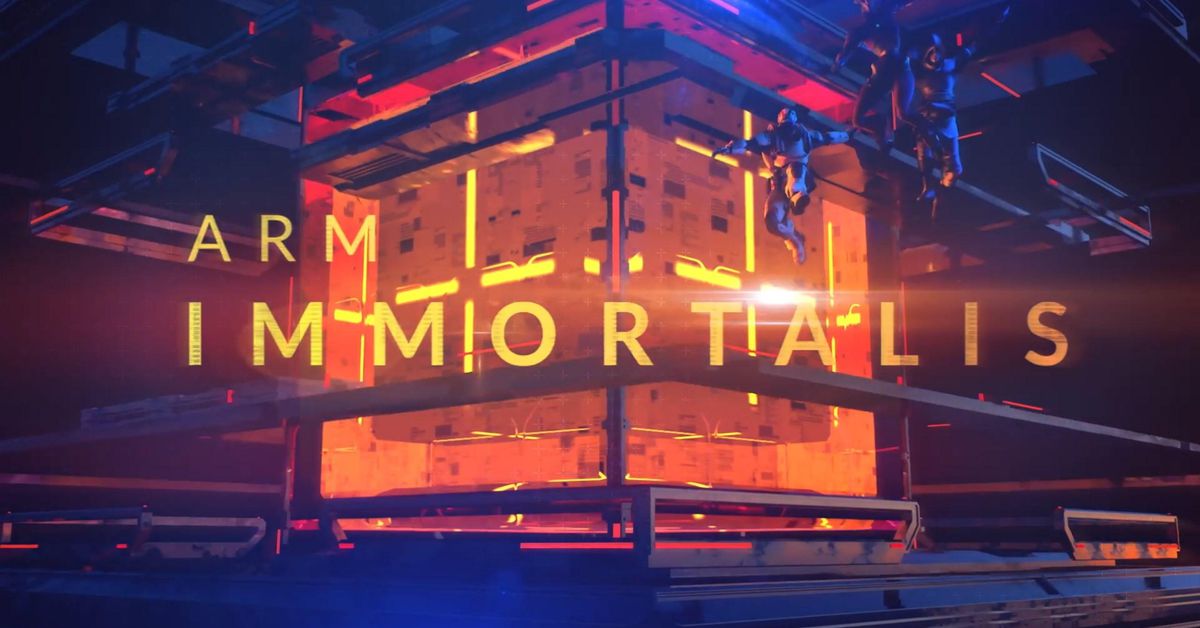
Arm is announcing its new flagship Immortalis GPU today, the first to include hardware-based ray tracing on mobile. As PCs and the latest Xbox Series X and PS5 consoles are all gradually moving toward impressive ray-traced visuals, Immortalis-G715 is designed to be the first Arm GPU to deliver the same on Android phones and tablets.
Built on top of Mali, a GPU that’s used by the likes of MediaTek and Samsung, Immortalis is designed with 10–16 cores in mind and promises a boost of 15 percent over the previous generation premium Mali GPUs. Arm sees Immortalis as the start of a transition to ray tracing on mobile following its success with the 8 billion Mali GPUs that have shipped to date.
“The challenge is that Ray Tracing techniques can use significant power, energy, and area across the mobile system-on-a-chip (SoC),” explains Andy Craigen, director of product management at Arm. “However, Ray Tracing on Immortalis-G715 only uses 4 percent of the shader core area, while delivering more than 300 percent performance improvements through the hardware acceleration.”
Arm is already delivering software-based ray tracing in last year’s Mali-G710, but the promise of hardware support means we will start to see flagship smartphones with this chip at the beginning of 2023.
“We decided to introduce hardware-based Ray Tracing support now on Immortalis-G715 because our partners are ready, the hardware is ready, and the developer ecosystem is (about to get) ready,” says Craigen. Arm is only providing a couple of examples of ray tracing on its mobile GPUs today, and there’s no clear commitment from any game developers just yet.
Arm also has an update to its main Mali line with the Mali-G715. This GPU includes variable rate shading (VRS) to boost gaming performance and energy savings on mobile. VRS essentially renders the parts of a scene in a game that require more detail, so details in the background don’t need as much rendering power. “When enabling Variable Rate Shading on gaming content, we have seen improvements of up to 40 percent on frames per second,” claims Craigen. Other improvements mean these latest Arm GPUs will see a 15 percent energy efficiency improvement over its previous Mali-G710 GPU that was introduced last year.
Arm’s move to support hardware-based ray tracing on its GPUs is a significant step for mobile Android gaming. Ray tracing is currently limited to powerful GPUs that are typically found in gaming PCs or the latest Xbox Series X and PS5 consoles. Nvidia has previously demonstrated ray tracing in conjunction with Arm last year, but it was an RTX 3060 GPU paired with a MediaTek Kompanio 1200 Arm processor. That effort is focused on PCs and likely Chromebook-like laptops, but Arm’s new Immortalis is focused squarely on Android.
Epic Games is putting its support behind Immortalis with its Unreal Engine, alongside MediaTek and Unity. This is the type of industry support you’d expect for a new mobile GPU like this, but the real test will be how many mobile game developers start implementing ray tracing. It’s still incredibly rare to see ray tracing on console games, so it’s unlikely we’ll see a flood of mobile games moving to ray tracing anytime soon.


/cdn.vox-cdn.com/uploads/chorus_asset/file/25162667/STK159_Shein_02.jpg)
/cdn.vox-cdn.com/uploads/chorus_asset/file/25255283/HT054_AI_writing_1.jpg)


